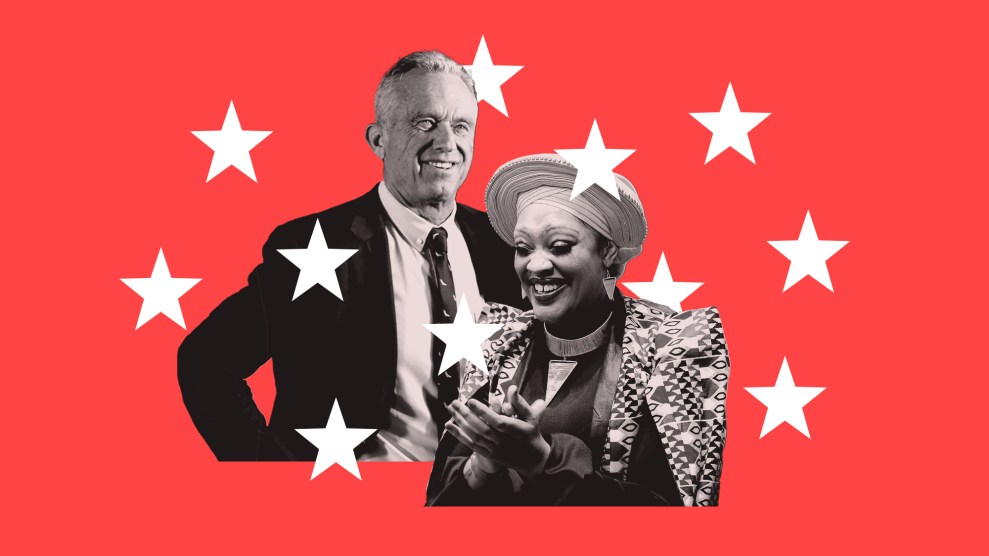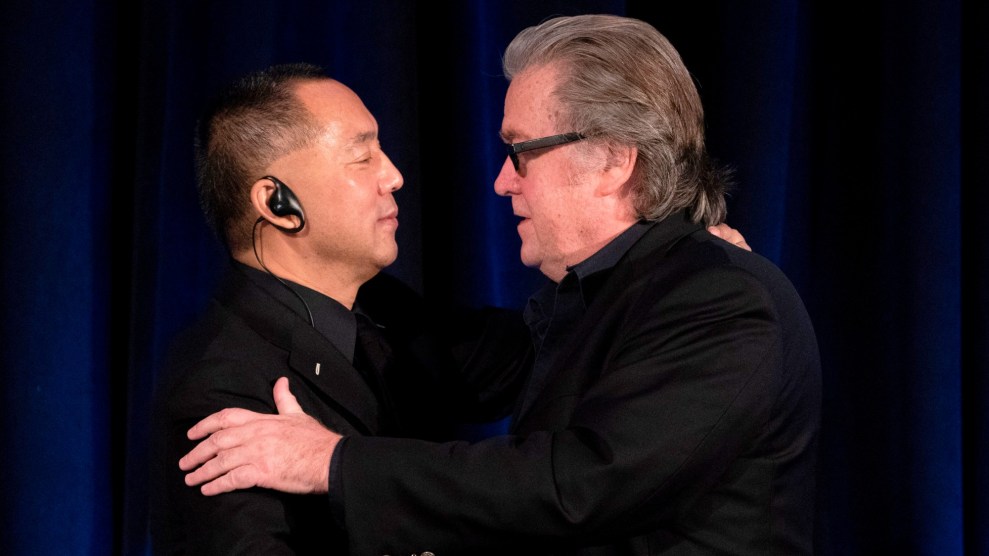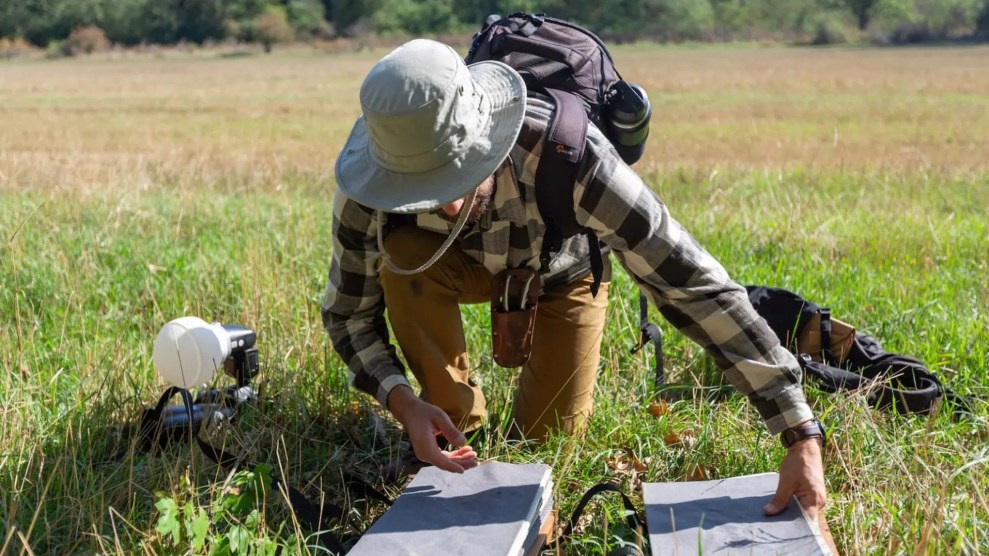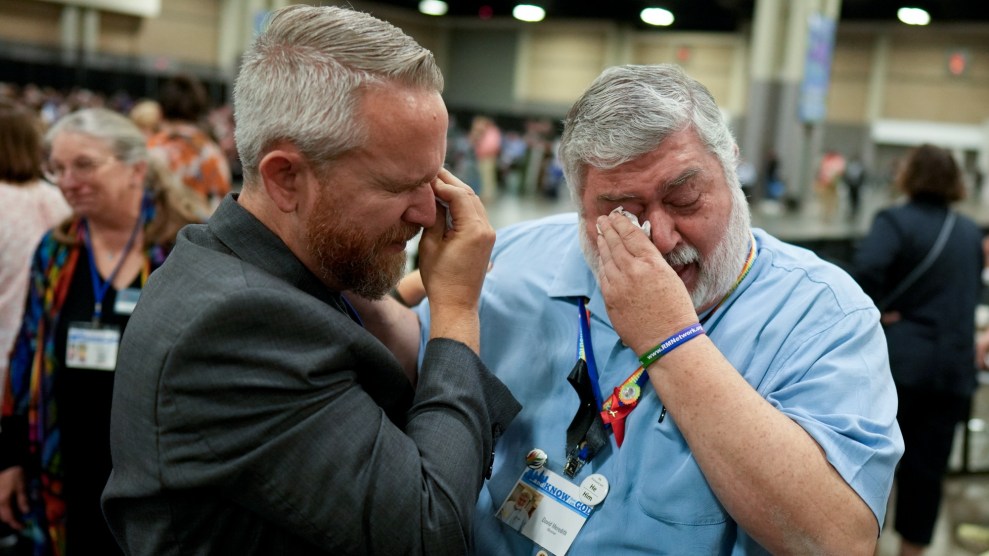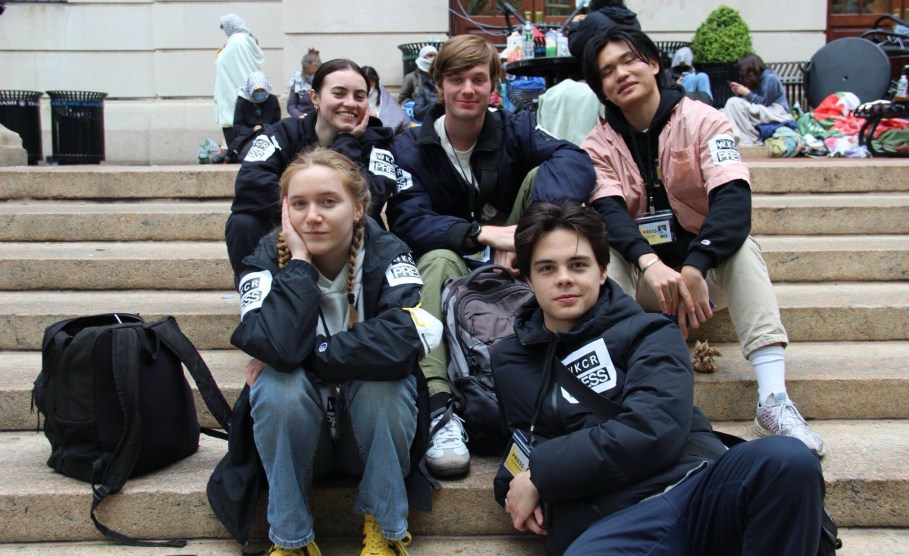If you take a look at Google Maps, you can find skid row in Los Angeles pretty easily. It’s just east of downtown and less than a mile south of City Hall—and it’s labeled “Skid Row.” That surprises me a little, since this is hardly an official name or anything, but I guess Google believes in labeling everything truthfully.
During my photo excursion to LA on Thursday night, I visited skid row at dawn when the light got good enough to take a few pictures. As you can see, it really is just a stone’s throw from downtown:
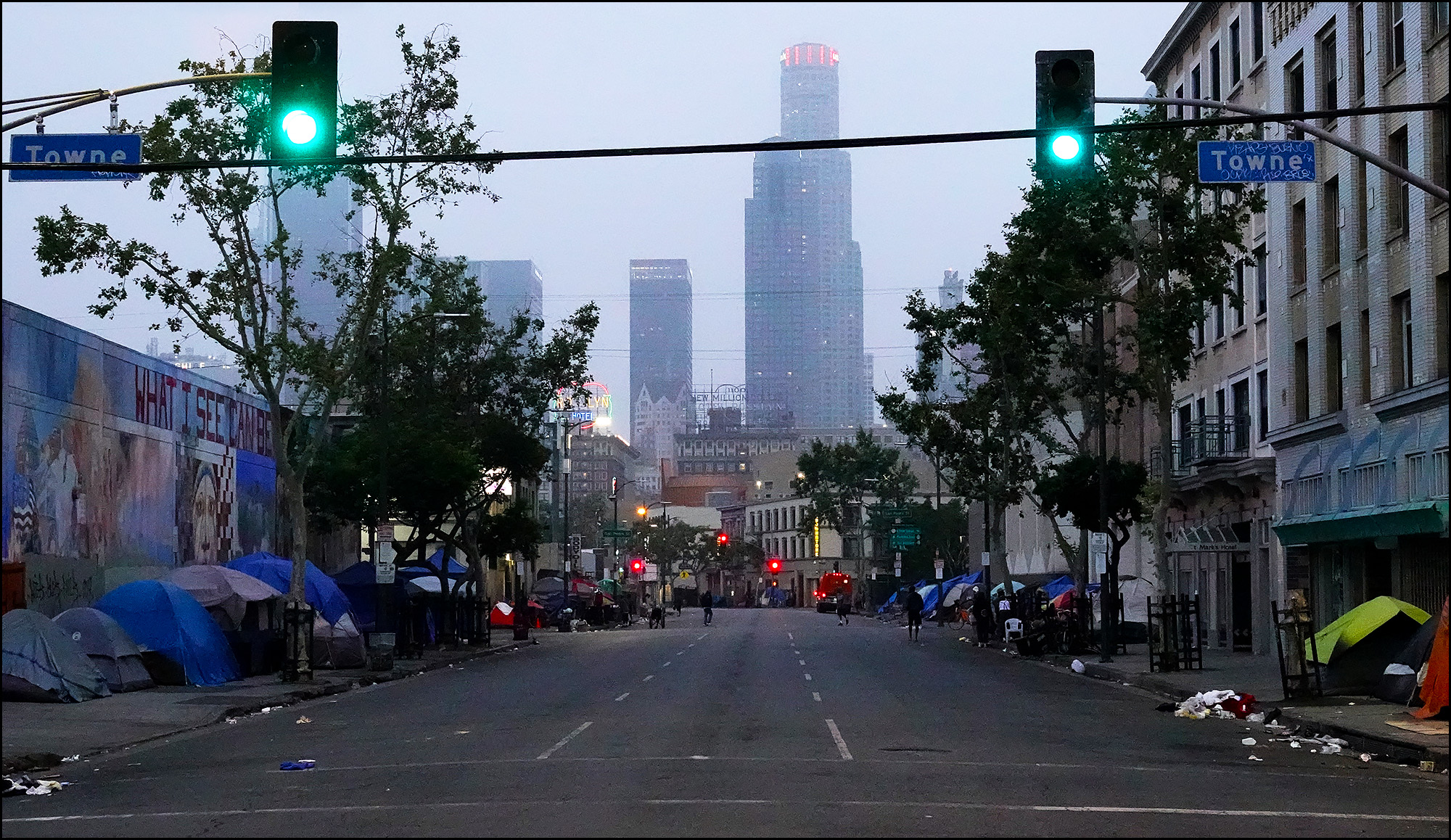
A few people sleep indoors, at least some of the time:
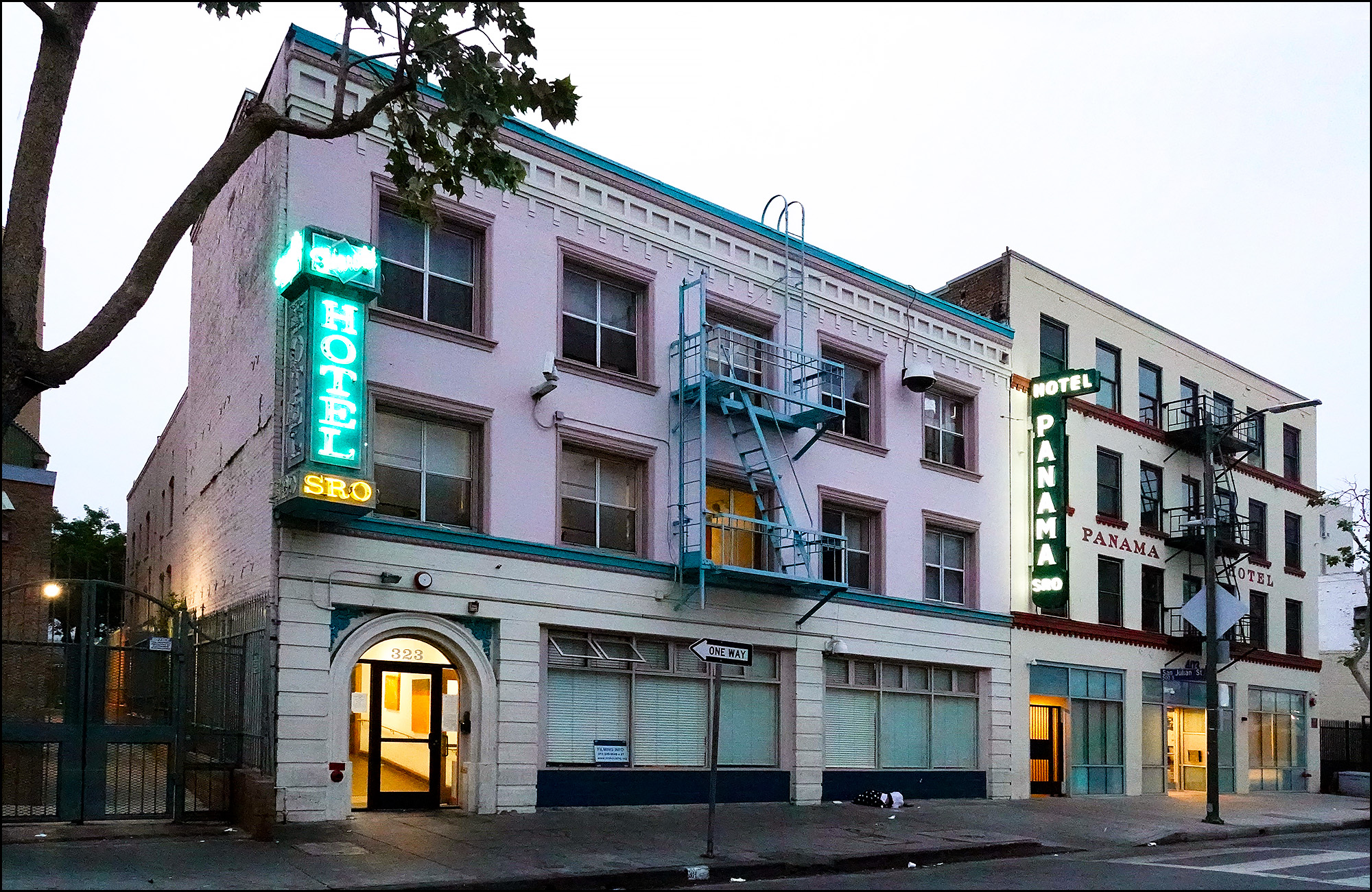
Others sleep in makeshift boxes:
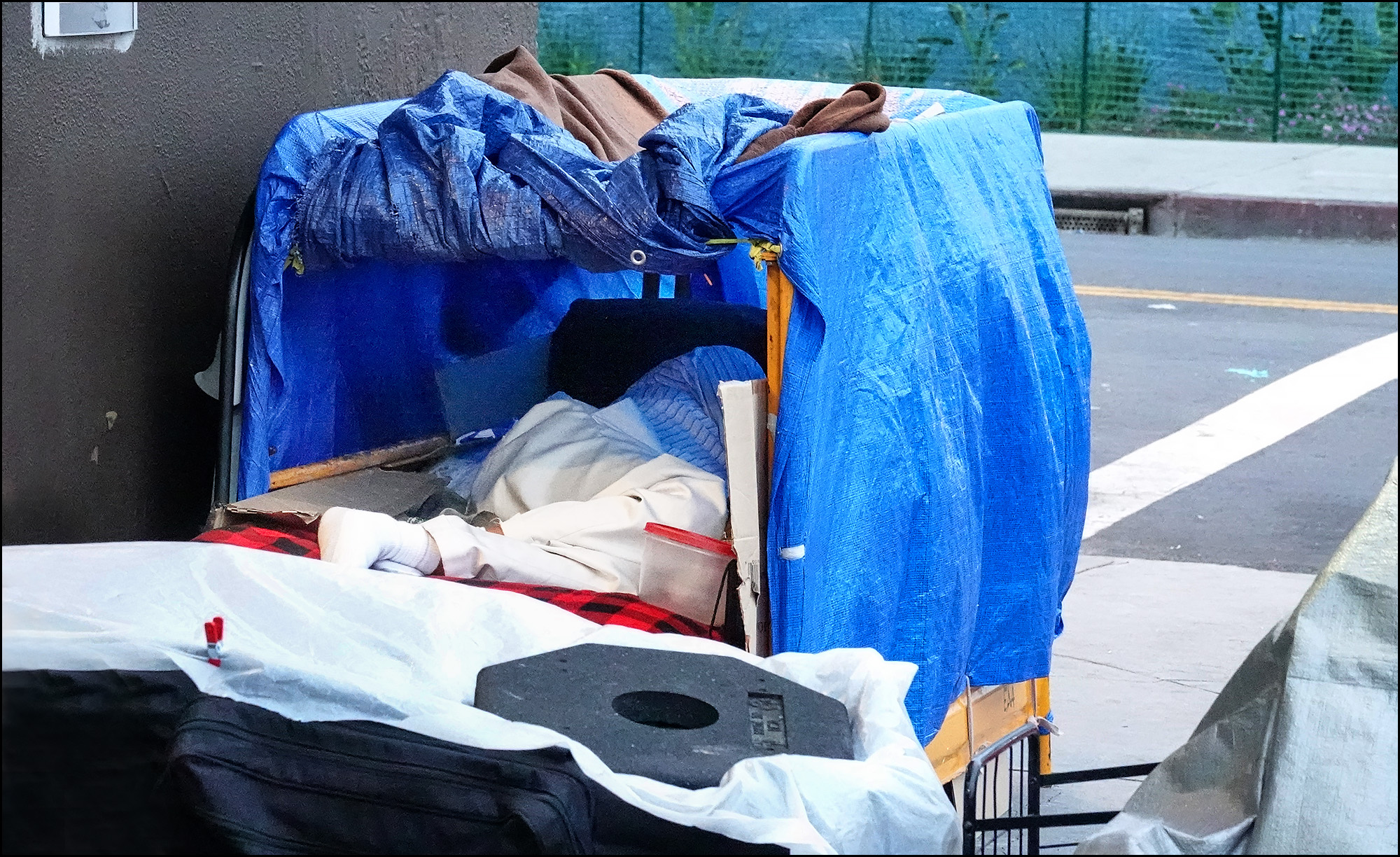
At dawn, a few are just getting up and collecting their things for their daily routine:
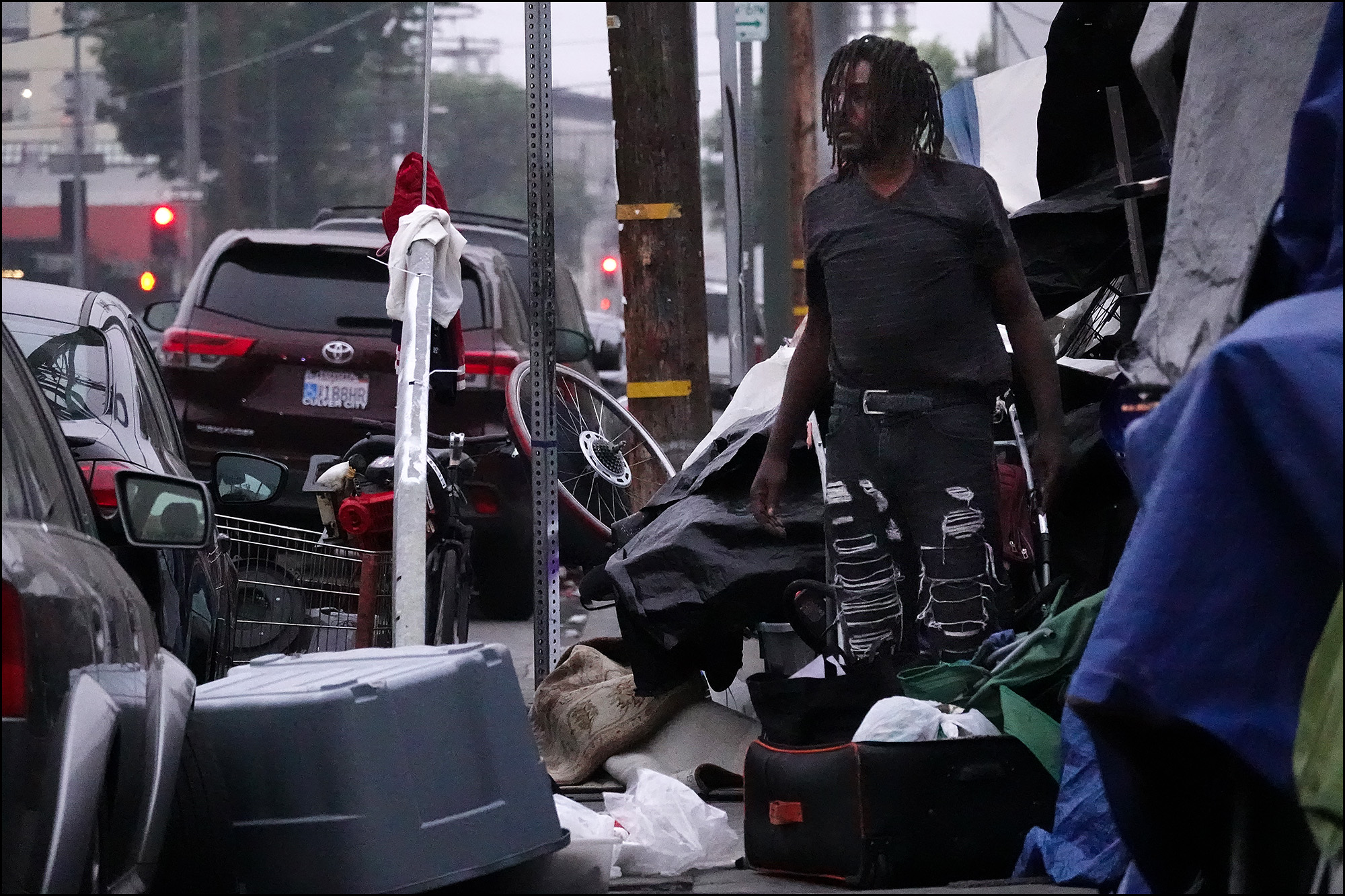
And some look as if they’ve already been up for a while:
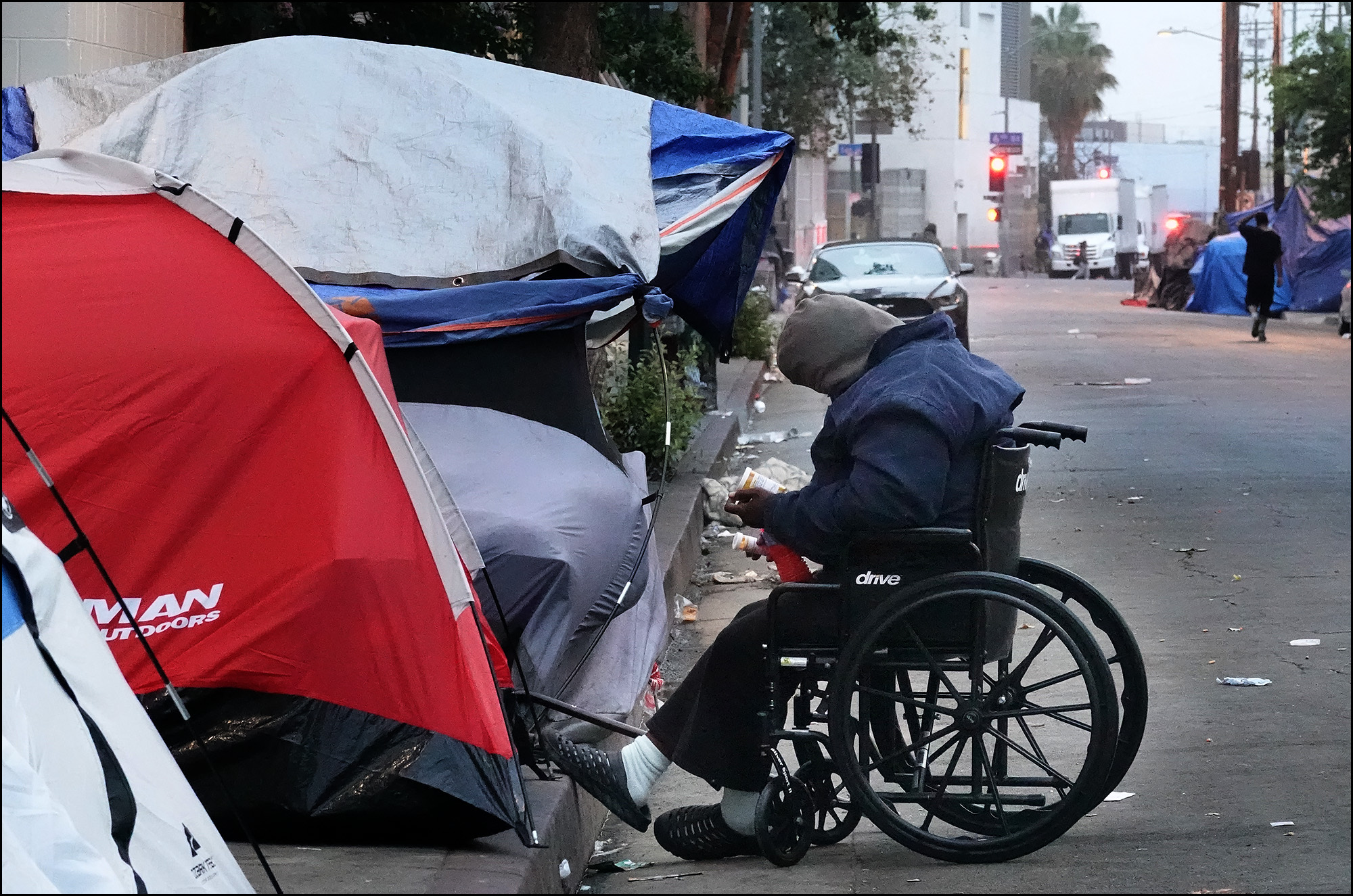
There’s a lot of wheelchairs on skid row. I’d say about 10-20 percent of the tents had wheelchairs outside.
Thanks to a couple of recent initiatives, Los Angeles has about $350 million per year to spend on the homeless, plus $1.2 billion in bonds to build 10,000 new housing units. Now comes the hard part: persuading communities to support local homeless shelters and persuading the homeless to use them. That’s an intricate problem. Some of the homeless just need shelter. Others need mental health assistance. And still others need drug or alcohol treatment. These all require different kinds of outreach and different kinds of facilities. Put it all together, and even $350 million isn’t that much: it amounts to about $6,000 per homeless person in LA—barely enough for bare-bones shelter, let alone expensive medical help.
But it’s a good start. It’s shameful that in the richest big country in the world anyone has to live like this. There are some who will refuse help no matter what, but anyone who needs and wants help should be able to get it. It’s one of the marks of a decent culture, and it has been for at least 2,000 years:
Matthew Chapter 25:
34 Then shall the King say unto them on his right hand, Come, ye blessed of my Father, inherit the kingdom prepared for you from the foundation of the world:
35 For I was an hungred, and ye gave me meat: I was thirsty, and ye gave me drink: I was a stranger, and ye took me in:
36 Naked, and ye clothed me: I was sick, and ye visited me: I was in prison, and ye came unto me….
40 And the King shall answer and say unto them, Verily I say unto you, Inasmuch as ye have done it unto one of the least of these my brethren, ye have done it unto me.
41 Then shall he say also unto them on the left hand, Depart from me, ye cursed, into everlasting fire, prepared for the devil and his angels….
44 Then shall they also answer him, saying, Lord, when saw we thee an hungred, or athirst, or a stranger, or naked, or sick, or in prison, and did not minister unto thee?
45 Then shall he answer them, saying, Verily I say unto you, Inasmuch as ye did it not to one of the least of these, ye did it not to me.
46 And these shall go away into everlasting punishment: but the righteous into life eternal.






